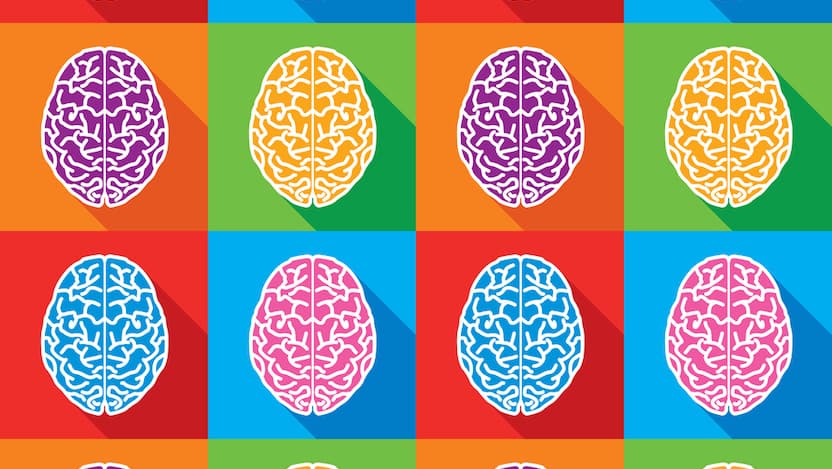LSD: the new antidepressant?

For thousands of years, humans have used natural psychoactive substances in a variety of ways, including in religious ceremonies and for medicinal purposes. More recently, we’ve begun to develop synthetic psychedelics like lysergic acid diethylamide — better known as LSD. Whether gathered from the woods or produced in labs, these substances can have powerful effects on our minds and our memories, and may have untapped potential as treatments for a variety of psychiatric conditions.
Drugs act on the brain by binding to proteins called receptors. Upon activation, these receptors can elicit numerous biological responses, which can alter brain activity, and ultimately, behavior. For example, LSD has been shown to increase the release of the neurotransmitter serotonin in the brain, which acts on a subclass of receptors called 5HT-2A. These receptors are expressed throughout the brain and are thought to be the main reason that LSD produces changes in perception and other mind-altering subjective effects.
Brain cells in the cortex become more excited after the receptors are activated, making the cells communicate more with each other. Under LSD, on a whole brain level, the connections between brain regions that normally communicate with one another frequently become weaker. Instead, electrical activity increases, inciting more cell chatter across new brain networks.
This disintegration of typical networks creates new connections, and on a cognitive level, big changes in perceived consciousness. These disruptions may create new ways for a person to view and process thoughts and emotions. As a result, researchers are studying this drug class as a potential avenue for treating certain mental health disorders. Finding novel ways to treat such conditions is important, particularly for individuals who may not respond to standard antidepressant medications and traditional forms of therapy.
Among the general population, there is increasing interest in the consumption of "microdoses" of LSD, the idea being that a very small dose of the drug would allow one to tap into the positive drug effects without being fully intoxicated and unable to carry on with daily functions. Microdoses of LSD, approximately a tenth of the typical recreational dose, would presumably elicit a fraction of the effects that a high dose would. Many advocates of the practice claim that microdoses help improve a number of different factors including productivity, creativity and mood.
In the Human Behavioral Pharmacology Lab directed by Harriet de Wit, PhD, my colleagues and I are interested in studying the effects of various psychoactive substances like microdoses of LSD on changes in cognition and overall mood in healthy volunteers. In one recent study from our lab, adult volunteers received four microdoses of LSD every three to four days. We assessed improvements in mood, emotional processing, and certain cognitive aspects, like working memory. We found small effects on mood, including increases in feelings of euphoria, and a reduction in negative emotions during a task that mimics social rejection.
In another study, we used EEG to understand more about the effects of very low doses of LSD on neural activity while the brain was at rest and during performance on certain tasks. We found that low doses of LSD produce similar effects that have been reported at higher doses, including increases in brain activity during resting state. We’re still trying to determine whether this change in brain excitation correlates with the positive subjective effects of the drug. Nonetheless, this research suggests that microdoses of LSD may hold some advantageous elements. These controlled studies help give us more insight into how lower doses of LSD influence brain activity and human behavior, and whether there are clinically relevant factors.
Beyond research focused on understanding the effects of these kinds of drugs, the biopharma industry has become interested in tapping into their potential therapeutic benefits. In recent years, companies within this area of the health industry have begun seeking to harness the pharmacological properties of psychedelics — either alone, or in combination with therapy — to treat mental health conditions such as depression, anxiety and addiction.
These companies are developing new compounds with similar properties to those of classic psychedelics, with the idea of minimizing intrusive effects such as hallucinations, and maximizing the effects such as increases in openness and positive emotions. Other biopharma research is interested in developing new therapeutic approaches, combining drugs with mental health therapy. In this design, psychedelics would be administered by a therapist. Patients would open themselves up to the unique or meaningful emotions that arise for a deeper, more introspective look into their issues, working through them in ways that would ultimately help alleviate symptoms and allow for healing.
Psychedelics represent a new and innovative approach for the treatment of various mental health conditions, and we are just getting to understand more about this phenomenon. The research done by those of us in the Human Behavioral Pharmacology Lab and others around the world will contribute to a better understanding of the effects of psychedelics and, in turn, will support the study and use of psychedelics in the mental health space.
